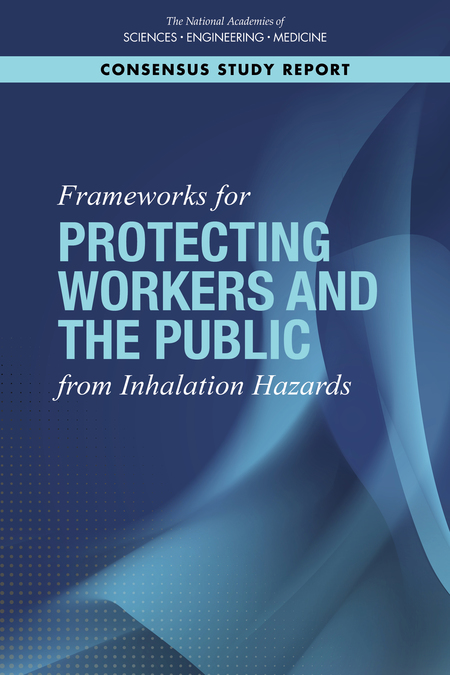by Brianna Crandall — March 30, 2022 — The National Academies of Sciences, Engineering, and Medicine recently published a Consensus Study Report, Frameworks for Protecting Workers and the Public from Inhalation Hazards, to provide recommendations for the oversight and guidance of respiratory protection in the United States.
 Federal partners the National Institute for Occupational Safety and Health (NIOSH), the Environmental Protection Agency (EPA), and the Department of State, as well as the CDC Foundation, commissioned this report in response to the evolving need for available and appropriate respiratory protection for workers not already within a workplace respiratory protection program, as well as for the public who could be exposed to inhalation hazards such as viruses, wildfire smoke, and mold as a part of daily life.
Federal partners the National Institute for Occupational Safety and Health (NIOSH), the Environmental Protection Agency (EPA), and the Department of State, as well as the CDC Foundation, commissioned this report in response to the evolving need for available and appropriate respiratory protection for workers not already within a workplace respiratory protection program, as well as for the public who could be exposed to inhalation hazards such as viruses, wildfire smoke, and mold as a part of daily life.
NIOSH Director John Howard, M.D., pointed out:
The need for appropriate respiratory protection has dynamically shifted as more workers and the public now must consider the need for this protection in their daily lives. The recommendations in this report are critical to spurring further action to develop a coordinated and robust plan to address this challenge.
The purpose of the report’s proposed framework is to provide a unified and authoritative source of information for the effective oversight of the development, approval and use of respiratory protection. The report includes considerations for the challenges of implementing effective respiratory protection on such a large scale, such as identifying the appropriate respiratory protection for a hazard, as well as product design and availability.
Chris Frey, Deputy Assistant Administrator for Science Policy for EPA’s Office of Research and Development, stated:
EPA research shows us that air pollution, such as particulate matter and wildfire smoke, airborne infectious agents, and other inhalation hazards adversely affect communities and at-risk populations. Further, research demonstrates the effectiveness of interventions that reduce risk. Thus, this research contributes to identifying effective practices aimed at protecting public health.
The report identifies seven core functions for both expanded occupational use and personal use of respiratory protection:
- Developing and approving respiratory protective devices;
- Ensuring adequate coordination and authorities to protect the target community from inhalation hazards;
- Assessing hazards and determining the needs for respiratory protection;
- Determining the necessary respiratory protective devices;
- Ensuring availability and access pathways for respiratory protective devices;
- Engaging, informing and ensuring access for the target community; and
- Incorporating lifecycle learning and continuous improvement.
Within each function, the report outlines the recommendations of the framework. See options on the National Academies site for downloading or ordering the complete prepublication version of the Consensus Study Report, Frameworks for Protecting Workers and the Public from Inhalation Hazards.
For a summary of the report, including recommendations, visit the NIOSH Science Blog: Release of National Academies Consensus Study Report on Protecting Workers and the Public From Inhalation Hazards.




